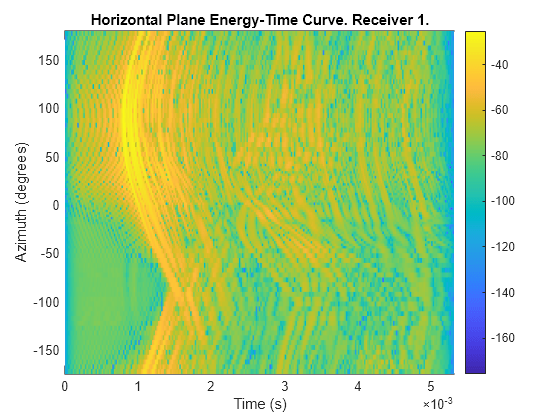energyTimeCurve
Syntax
Description
Examples
Input Arguments
Name-Value Arguments
Output Arguments
More About
References
[1] Davis, Don, and Joe Martinson. "Using Basic Energy Time Curve (ETC) Measurements." In Audio Engineering Society Convention 66. Audio Engineering Society, 1980.
Version History
Introduced in R2024a
See Also
sofaread | findMeasurements | plotGeometry | freqz | impz | spectrum | interauralTimeDifference | interauralLevelDifference | directivity
